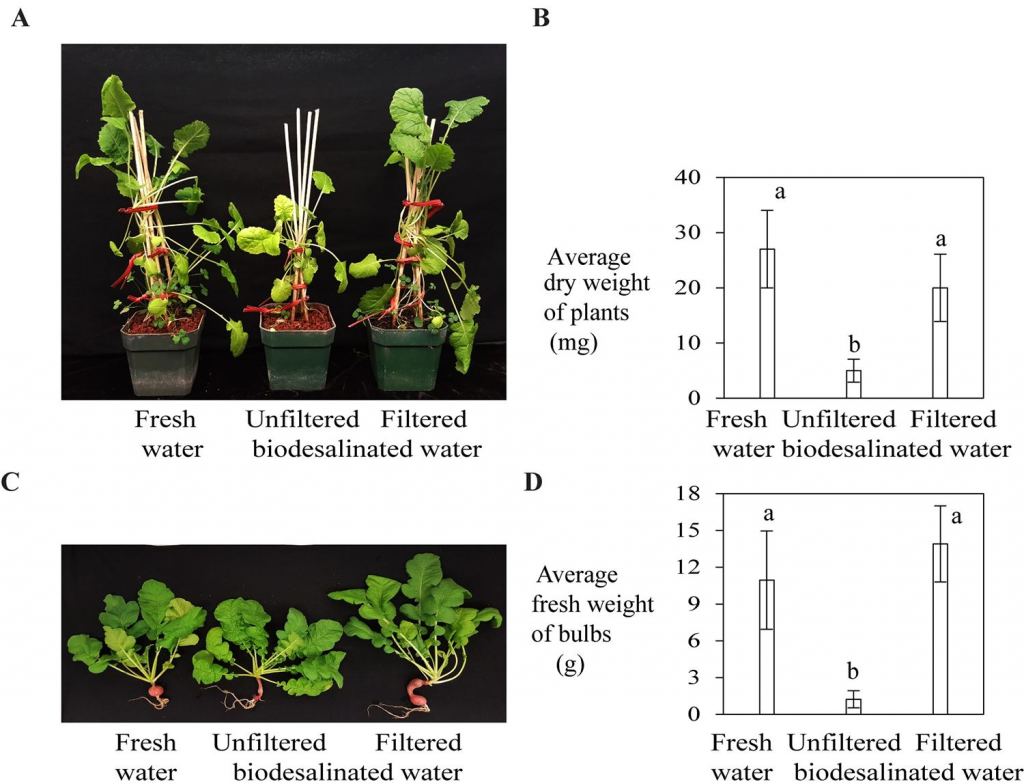Mark Watney can keep his potatoes. Real astronauts should grow alfalfa. That’s the finding of a newly published study out of Iowa State University, which tested the viability of making Martian regolith suitable for growing food.
The two major insights from the paper are that alfalfa plants make an excellent biofertilizer to boost the organic content of otherwise inert soil, and that certain cyanobacteria can help desalinate Mars’ excessively briny water sources. Martian soil is largely basaltic dust – that is, weathered bits of ancient volcanic rock. On Earth, volcanic areas are rich in nutrients and often support thriving ecosystems, and indeed many of the ingredients essential to life are also present in Mars’ soil.
But there are deficiencies there too. Lacking organic carbon, the regolith doesn’t hold water well and is devoid of nutrients that calorie-rich vegetables require to thrive. Martian farmers will also have to deal with the presence of perchlorates in the soil – toxic molecules that could be good news for those hoping to find life on Mars, as they can act as an energy source for microbes – but that are dangerous to human health.
Long story short, to grow crops on Mars, the soil is going to need organic fertilizers. That’s where alfalfa comes in. Growth of alfalfa in bare basaltic regolith simulant soil or garden soil watered with (A) fresh water or (B) fresh water or filtered biodesalinated water.
Credit: Kasiviswanathan et al. , 2022, PLOS ONE, By https://creativecommons. org/licenses/by/4.
0/ Alfalfa seems to need relatively few nutrients to grow, and the team was able to yield a small crop of the plant using simulated martian regolith. More importantly, they were able to crush the alfalfa into a powder and add it to the soil as fertilizer, enabling more complex and nutritious plants like turnips, radish, and lettuce to grow. “In principle, it is possible to grow food crops in treated martian basaltic regolith soil,” the authors write.
But it isn’t perfect. The turnip plants grown in the alfalfa-regolith mix weren’t as healthy as their earthly counterparts. They could certainly provide astronauts with essential nutrients, but the veggies won’t be very calorie-dense.
Still, it’s a step in the right direction. At least it will be if Martian sources of water are useable. Mars has plenty of water, but it’s either frozen in ice caps at the poles, or in salty underground reservoirs.
To see whether they could make the briny water expected on Mars useful for growing crops, the researchers introduced a marine cyanobacterium called Synechococcus sp. PCC 7002 to a simulated brine solution. The bacteria successfully desalinated the water, and then was filtered out by running the water through layers of basaltic rock.
The researchers used the resulting fresh water to grow alfalfa and other veggies, offering a proof of concept for in situ use of both martian water and martian soil to grow edible plants. It really is possible. (A) Flasks containing Synechococcus sp.
PCC 7002 grown briny water simulant. (B and C) Image of basalt-type volcanic rocks packed in a glass column with largest particles (~60 mm) at the top, smallest particles (~ 6 mm) at the bottom and intermediate particles in between. Final filtrate was collected and used to grow plants.
Credit: Kasiviswanathan et al. , 2022, PLOS ONE, By https://creativecommons. org/licenses/by/4.
0/ Of course, there’s more work to be done. The next step will be to test the growth of “cereal and leguminous crops” in the treated simulant soil. The researchers similarly want to work on the perchlorate problem in future studies, admitting that “the presence of perchlorate in martian regolith provides a significant challenge in its use as an agricultural substrate.
” Living and working on Mars is going to be difficult. There are a thousand things that have to go right, from radiation shielding to life support systems. But this study ends on an optimistic note for future solar system explorers, at least as it relates to the question of food production.
“For long-term purposes,” they write, “it is possible to treat in situ soil and water resources for farming on Mars to sustain human missions and permanent settlements. ” Thank you, alfalfa. Read the full paper here: https://journals.
plos. org/plosone/article?id=10. 1371/journal.
pone. 0272209 Featured image: Growth of (A and B) turnip and (C and D) radish plants (after 6 weeks) in alfalfa treated basaltic regolith simulant soil watered with filtered or unfiltered biodesalinated water, or fresh water (control). Dry weight of 5 whole turnip plants and fresh weight of 5 radish bulbs in each treatment type were measured.
Data represent average ± SE. (B and D) Average dry or fresh weight of samples that do not share a letter above the bar are significantly different (P<0. 0001) as determined by one-way ANOVA.
Image Credit: Kasiviswanathan P et al. PLoS ONE. http://creativecommons.
org/licenses/by/4. 0/ The post The First Crops on Mars Should be Alfalfa and Cyanobacteria. Then Comes Tastier Plants appeared first on Universe Today.
.
From: universetoday
URL: https://www.universetoday.com/157239/the-first-crops-on-mars-should-be-alfalfa-and-cyanobacteria-then-comes-tastier-plants/



